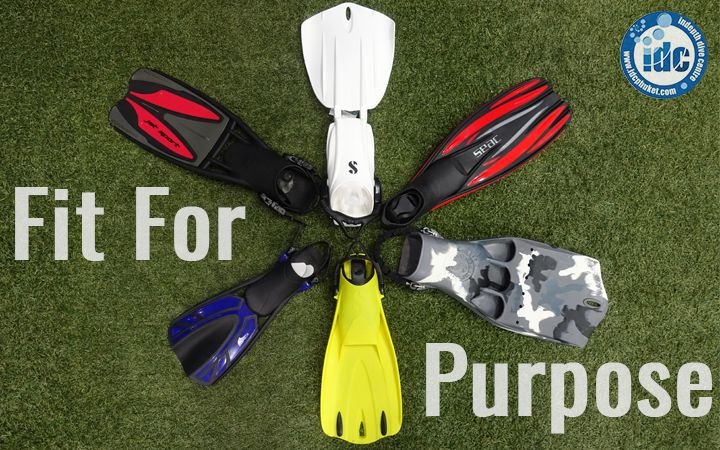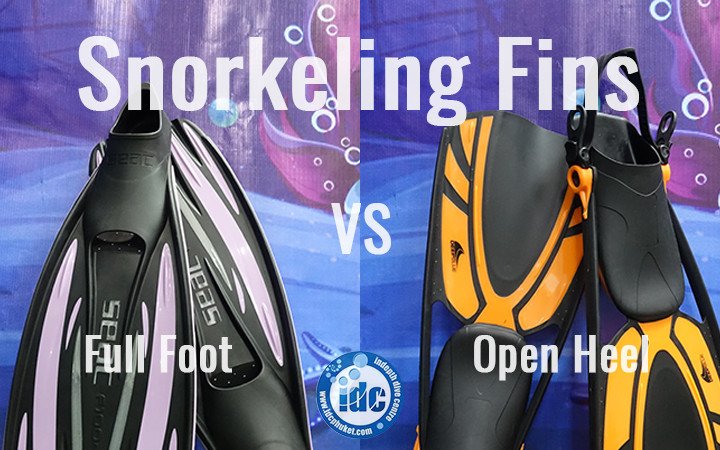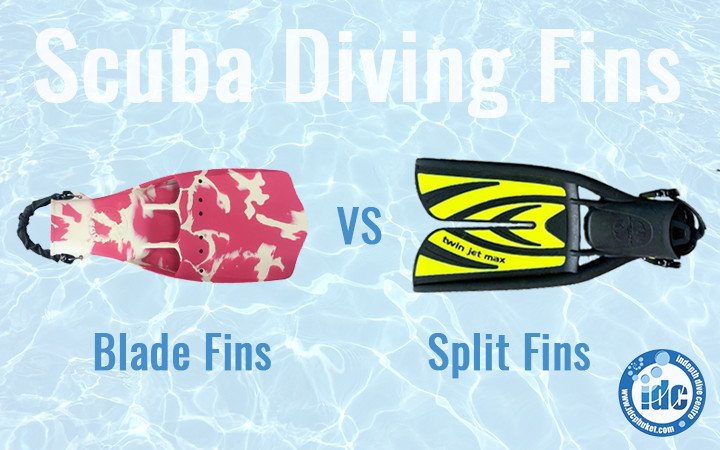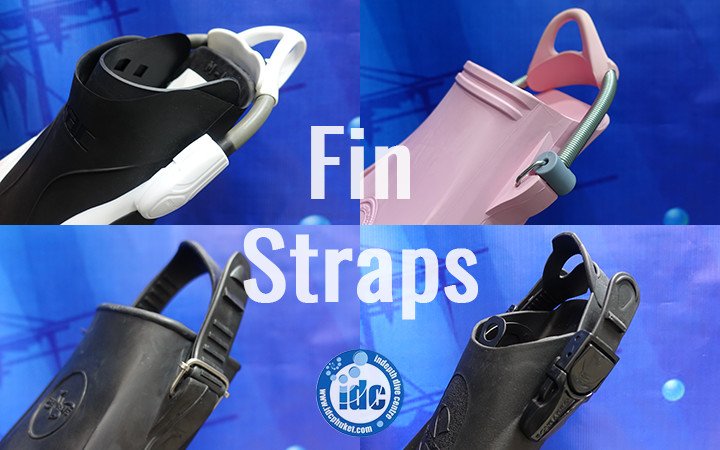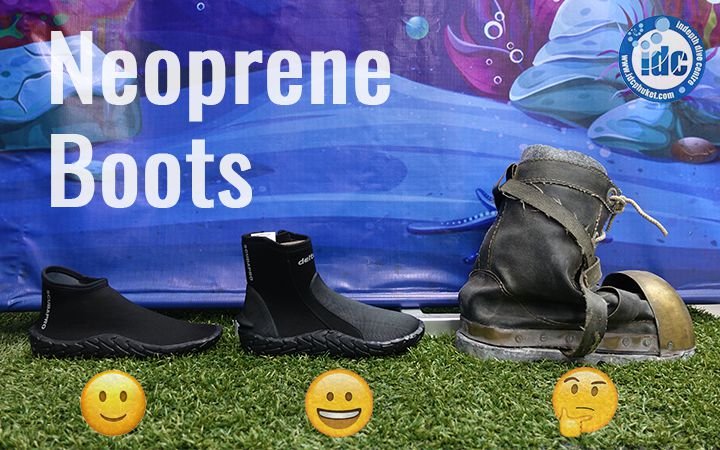Choosing the right fins – All you need to know
Need help choosing a new pair of fins? Fins, along with masks and snorkels, are a critical piece of personal diving equipment. Ideally, every diver should have their own set of fins which fit them personally. People usually purchase masks, fins and snorkels together, sometimes as a set. If you would like some advice on selecting a mask, please click here, or some advice on selecting a snorkel, click here.
Choosing the right pair of fins is highly personal and subjective, based on individual preferences. Ask any diver what fins they prefer and why, and you will receive a different answer from each person you ask! There is no one-size-fits-all approach. For new divers, the choices can be overwhelming, if not confusing. The most important considerations are comfort and fit, as with any piece of diving equipment,
Purpose of Dive Fins
The purpose of your fins is to propel you through the water, in the most efficient and effective way possible. French Naval Officers presented the first prototype for swimming fins in 1914. It was then patented in 1933 after French inventor Louis de Corlieu who witnessed locals in Tahiti dipping woven mats into tar to harden them before attaching them to their feet and using them to propel themselves through the water. Other early models of fins included wooden boards strapped to swimmers’ feet!!! Since then, and thanks to modern technology, fins have significantly evolved in both comfort or style.
Without fins and due to the weight of scuba diving equipment, divers would struggle to move through the water. Fins provide a greater surface area than what our feet do, to push against the water and propel us forward. The effectiveness of your fins will determine how much energy you have to use to propel yourself through the water. This, in turn, affects your air consumption as well as your overall enjoyment of the dive.
Choosing fins that are fit for purpose
When choosing fins, there are a couple of questions you need to ask yourself before you decide on your purchase. You must ensure your fins fit their intended purpose and are suitable for the type of diving you intend to do.
Diving environment & climate
The first is to consider what type of diving will you be doing and where. Will you be scuba diving in tropical waters from sandy beaches or off boats? Will you be freediving? Or will you be diving in colder water and needing to walk in and out over rocky shores? The type of diving you are doing will heavily influence what kind of fins you need to look at.
In warm, tropical climates, for example, full foot fins which can be worn barefoot are sufficient. In colder waters, you need to wear a neoprene boot underneath your fin which provides thermal protection. Such boots will also protect the soles of your feet when you are entering and exiting the water. The fin types designed to be worn with boots vary significantly from those designed to be worn barefoot (see further below).
Equipment configuration
Second, you must consider what kind of diving you will be doing and with what equipment. Will you only be diving on a single, back-mounted tank or will you dive with a twin-set? On sidemount? Or with a rebreather? All these configurations will place more weight around your torso which will need to be countered by a heavier fin. Likewise, because additional equipment weighs more than the standard single, back-mounted tank arrangement, you will need a stiffer fin to provide sufficient propulsion for all that added weight. If you will be using a dry suit, a heavier fin will counter the added buoyancy in your legs/feet. Not all fins have the same buoyancy properties; some are positively buoyant whilst others are neutral or even negative.
You must consider where you will be diving and with what equipment to know what type of fins to choose. Divers who dive in a variety of environments and with different equipment configurations may have several different pairs of fins, to suit each purpose.
Fit is very important when choosing fins
Proper fit is critical when choosing fins. If your fins do not fit you correctly, you may be prone to blisters, abrasions or even cramps This takes away the enjoyment from your dive and can be painful. Fins that are too tight can be uncomfortable, and too loose fins can slip off your foot in the water.
As with any piece of equipment, we recommend that when you are planning to buy fins, you come to the dive shop and physically try them on. Dive shops generally have a wide range of fins to choose from. The staff will provide advice regarding what fin might suit you and help you in finding the right fit.
Barefoot
As a starting point, with full foot or snorkelling fins you can try a pair which are in the same size as your shoes. If you plan to dive barefoot, you need to try the fins on also barefoot. When planning to dive with a neoprene sock or a cotton sock, you need to try your fins on with whatever foot attire you plan on wearing in the water.
If trying fins on barefoot, you may have to wiggle your feet more to get into them when they are dry but you want them to be snug. Once your feet get wet, they will naturally cool down and shrink slightly in response to the temperature change. This will make your fins seem a little bigger. If the fin easily slips on with a dry foot, there is a risk it may become too big once your foot is wet. If you can’t find a fin which matches your shoe size, or if you take a half size, you may need to use a neoprene sock to add a little bit of padding.
With boots
If wearing a fin which requires a neoprene boot, you will also need to try on the boots. Neoprene boots come in various thicknesses, similar to a wetsuit. The thicker the boot, the more buoyant it will be but the more thermal protection it will provide. Boots are generally sized like shoes. As a starting point, you need to try the boot which is the same size as your regular shoe size and go from there. When trying on the fin, you need to do this with the boot on.
Once you have your fins and boots on, flex and wiggle your ankle and try to mimic the finning motion you would make in the water. The fin shouldn’t chafe or pinch anywhere and should feel comfortable and snug. A well-fitted fin should pivot up and down with your foot.
If possible, try your fins in the pool so you can get a sense of how they feel. Check what the propulsion is like and how stable you feel in the water with them. For new divers acquiring equipment, it's a great idea to take a Peak Performance Buoyancy speciality course with an instructor. It will help you adjust to your equipment, fine-tune your trim, buoyancy, and perfect your propulsion techniques.
Choosing Snorkelling Fins
Full foot
Known as closed-heel, full foot, snorkelling fins or pocket-type fins. These are the fins most commonly used in warmer waters and can be suitable for snorkelling, freediving and scuba diving. You may consider choosing this style of fins as it's simple, lightweight, ideal for traveling. It's also generally more affordable than the open heel variety of fin designed specifically for scuba diving. These fins are generally thinner and more flexible than scuba diving fins, making them ideal for snorkelling on the surface. They can, however, lack the power to provide sufficient propulsion when finning with heavy scuba equipment, or against a current.
Closed-heel, full-foot fins are designed to be worn barefoot. This also means that if you purchase this fin style, you do not have the added expense of having to purchase neoprene boots with them. A downside of these fins is that they offer no thermal protection so are unsuitable for colder climates. This type of fin is also not adjustable and prone to causing blisters if not properly fitted. Although designed to be worn barefoot, these fins can also be worn with a thin neoprene sock. This will provide some protection or even just a regular cotton sock which can prevent rubbing. Whatever you intend to wear with the fin in the water though, needs to be tried on with the fin in the shop to ensure the correct fit.
Open heel
Adjustable, open heel snorkelling fins are also designed to be worn barefoot. They are suitable for a range of in-water activities such as snorkelling, diving and free diving. This fin style is also lightweight and intended for use in warm tropical climates. Again, these fins provide no thermal protection for your feet, although can be worn with a thin neoprene sock. The main advantage of these fins over their full foot counterparts is that these fins are adjustable. They can be tightened or loosened to suit different divers, making them a popular choice in rental fins. A disadvantage of these fins is that over time, and due to the flexibility of the fin, the fin blade can bend or even crack. Consider these points when choosing your new fins.
Choosing Scuba Diving Fins
Scuba diving fins are generally heavier, longer, thicker and more rigid than their snorkelling counterparts. This is in order to provide sufficient propulsion for the added weight of scuba diving equipment. Consequently, they are often more expensive and more cumbersome to travel with because of their weight and length. Scuba diving fins are usually open heeled and almost always need to be worn with a neoprene boot which is held inside the fin by a fin strap. Diving fins come in two main categories; a "blade style" as well as a split fin. Scuba diving fins are available in various lengths, thicknesses and flexibility. The longer and more rigid the fin, the more power it has but the harder you will have to work to generate that power.
Blade Fins
Blade fins, also referred to as paddle fins, get their name simply from the shape of the blade. Fin blades vary significantly but there are some common features. The sidebars or rails which run along the outside of the fin are what gives the blade its strength and rigidity, stopping the fin from simply bending. Most blade fins also have some form of hydrodynamic rivets in the blade. They are also referred to as winglets and help to reduce drag.
Split fins
Split fins get their name from split which runs along the blade of the fin, splitting them into two parts. One of the most polarising styles of fins; divers either love them or hate them. The fins work similarly to an airplane, or birds’ wings, creating a vortex of high and low pressures on either side of the split. This pushes the diver through the water with greater ease, similar to a propellor.
Split fins are also slightly lighter than their blade counterparts but can be more expensive. Due to their design, they place less pressure on joints. This makes them more comfortable for divers with ankle or knee problems or those who are prone to cramps. A disadvantage of these fins is that they lack power against currents. This can also make it more difficult for the diver to maintain stability in the water because of their flexibility. This type of fin is predominately used by divers who use a flutter kick style to propel themselves. They are less popular with divers who prefer to frog kick.
Straps and buckles
Fin straps are what holds your boot into the fin and come in a range of materials. The strap attached to the fin by a buckle which may or may not be detachable. Many straps are permanently attached to the buckles whereas others can be unclipped and removed. One popular form of fin strap is stainless steel spring straps. Once adjusted you never need to adjust them again, you can simply pull them on and off, activating the spring each time. This makes fin removal and replacement very quick and easy. Springs also adjust for depth changes and pressure changes so will compress with the compression of your neoprene boot ensuring optimal fit throughout the dive. Stainless steel straps are also more durable than their rubber or plastic counterparts.
Rubber and plastic fin straps are common, relatively cheap and easy to replace if broken. As they are a less durable material, over time they may snap or wear. This style of strap usually needs adjusting each time the fin is removed and replaced. It also does not compensate for any pressure changes or compression in your neoprene boot, meaning you may have to tighten the strap during the dive.
Another alternative is a bungee strap which acts similar to the stainless-steel spring strap but is made of rubber. This style also allows for easy donning and removing of fins and will tighten in response to pressure changes and compression in your boot.
Neoprene boots
Scuba divers tend to spend more time in the water and expend more energy than their snorkelling counterparts whilst also diving to deeper depths where the water is not as warm. This often requires divers to use more thermal protection in order to stay warm.
Neoprene boots provide protection for your feet against rubbing but also whilst entering and exiting the water, particularly for shore dives. Neoprene boots come in a range of styles including boots that sit below the ankle as an ankle sock would, or boots that zip up to just above your ankle. Zips are commonly on the inner ankle, however, some models have zippers from the heel leading up to the back of the calf.
The soles of neoprene boots can vary in thickness, and as such, need to be tried on with fins prior to purchase. Generally, neoprene boots have sizing similar to regular shoes, making it easier to identify the one which will fit. The thickness of the neoprene is similar to what you would expect with wetsuits with 2mm, 3mm, 5mm and 7mm boots being common. The thicker the boot the more thermal protection it will provide, but similar to a wetsuit, the thicker it is, the more buoyant it is.Freediving fins
Freedivers move through the water by displacing it, consequently, they need longer fins which provide a greater surface area and displace more water. As such, freediving fins are very long and very rigid which give the diver significant power to propel through the water. A downside of these fins is that they are quite fragile and need to be taken care of.
Freediving fins are generally worn barefoot or with a very thin neoprene sock. The blade of a freediving fin can be made of plastic, fibreglass or even carbon fibre. The downside of these fins is that they can be very expensive and difficult to travel with due to their size.
Freediving fins are suitable for scuba diving as well, however, due to their length, they make finning styles such as frog kicking impractical.
Materials
Fins are generally made of either plastic, polypropylene or rubber. Different materials have different buoyancy characteristics and different weights. Rubber fins for example are popular with technical divers because they are typically heavier than other types of fins and can counter the weights of multiple first stages or manifolds. Plastic materials tend to be lighter making them more suitable for traveling due to their lightweight. With any piece of equipment, look for good quality gear and something which will stand the test of time without needing to be replaced often.
As for any equipment purchase, we recommend you come in and see us to try on as many different styles as you like, to help better inform your decision making. If you’re in the market for some new fins and would like some advice but are unable to get to us, contact us here, we are more than happy to help! Likewise, if you’d like to come for a dive with us and try out some different fins, have a look at the available day trips here.
Popular Quality Fins Manufacturers
More posts about diving equipment:
- Choosing Dive Equipment
- Choosing a Scuba Diving Mask
- All about snorkels
- Scuba Cylinders & Valves
- Buoyancy Control Devices (BCDs)
- How to choose a Scuba Regulator
- Breathing Gas Monitoring Devices
- Depth Monitoring Devices
- Scuba Diving Weights & Quick Release Weight Systems
- Choosing a wetsuit for Scuba Diving
- Audible Signaling Devices for Scuba Diving
- Choosing a Scuba Diving Compass




